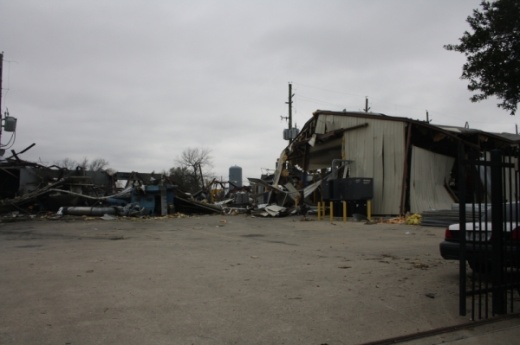A rusted pipe underneath a layer of insulation has been identified as a potential culprit in the incident however the investigation is ongoing, he said.
Peña said the city’s current inspection process may have not have been sufficient enough to catch the issue even if one was conducted shortly before the incident.
"I don't know if our inspection would have caught that," Peña said.
The site was last inspected in 2016 and was due for an additional inspection soon, he said.
In exchanges between council members and Peña alongside George Buenik, Director, Mayor’s Office of Public Safety and Homeland Security, city officials expressed satisfaction over the immediate emergency response to the event but said many concerns remain regarding permitting and inspection regulations for such sites.
Aside from having two minor expired permits, the Watson Grinding & Manufacturing facility was up-to-date in all the permits it was required to operate under the current fire code, Peña said.
The compound housed at the site, propylene, dissipates slowly but can cause dizziness and drowsiness in moderate concentrations and asphyxiation at high levels, Peña said. Air quality monitors and members of the National Weather Service were immediately dispatched to the scene to determine the concentration of the gas in the air.
"It's alarming that this was not considered a dangerous facility. It raises questions about, how safe are we?" District H Council Member Karla Cisneros said.
Watson Grinding & Manufacturing is not considered a “high hazard” site by current federal regulatory standards, Peña said. High hazard sites are subject to stricter regulation at the federal and state level and undergo the most monitoring. The city currently has 29,000 active permits for gas storage and usage. Many sites are required to carry multiple permits and only 170 sites across the city are considered “high hazard,” Peña said.
“[High hazard sites] are a lot safer in some respect because they’re required to be built to a certain level of protection and these lower level places still contain some of these high hazard chemicals and processes,” Peña said.
To better monitor safety concerns, Peña said work must begin toward hiring 10 more inspectors, lowering the threshold for high hazard classifications, strengthening inspection requirements and streamlining communications between various government agencies involved in monitoring such sites.
These changes will likely have to occur at both the city and state level, he said.





